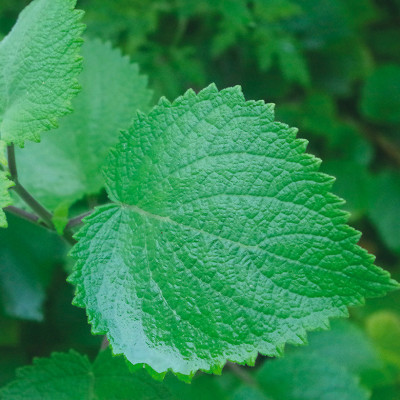
Ginger (ZINGIBER OFFICNALE)
Ginger is a perennial tropical plant known for its pungent and aromatic rhizome, widely used in cooking and for its medicinal properties.

Tetradenia riparia is a shrub that typically reaches a height of 2 to 3 meters. It features lush, bright green foliage and produces clusters of small, white to pale pink tubular flowers, emitting a delightful fragrance.

Guarantee safe & secure checkout
The leaves of Tetradenia riparia emit a pleasant, slightly mentholated fragrance when crushed, making it a popular choice for aromatic gardens.
In traditional medicine, Tetradenia riparia is used for its presumed therapeutic properties. It is attributed various medicinal benefits, including aiding digestion, relieving respiratory conditions, and possessing antimicrobial properties. However, it is essential to consult a healthcare professional before using it for medicinal purposes.
Tetradenia riparia thrives in full sun to partial shade, making it adaptable to various garden conditions.
It prefers well-draining soil and can tolerate periods of drought once established.
While it is relatively drought-tolerant, regular watering is recommended to promote healthy growth and flowering.
Tetradenia riparia is commonly grown as an ornamental shrub in gardens and landscapes, adding a touch of beauty and fragrance.
Medicinal plants have been used for centuries for their healing properties and health benefits. However, it is essential to consider the following points before using medicinal plants:
Before starting any herbal treatment, it is strongly recommended to consult a healthcare professional or a qualified herbalist. They can provide you with advice tailored to your specific medical situation.
Make sure you are well-informed about the plant you are using. Properly identify the plant and its parts used, as some parts may be toxic. If in doubt, do not use it.
Strictly follow the recommended dosages for each medicinal plant. Excessive amounts can cause adverse effects.
Some medicinal plants can interact with medications, trigger allergies, or be contraindicated for certain medical conditions. Always inform your healthcare professional about any use of medicinal plants.
Purchase medicinal plants from reliable sources to ensure their quality and purity. Avoid harvesting wild plants, as this can harm the local ecosystem.
By using medicinal plants with caution and obtaining professional advice, you can benefit from their properties without risking your health.